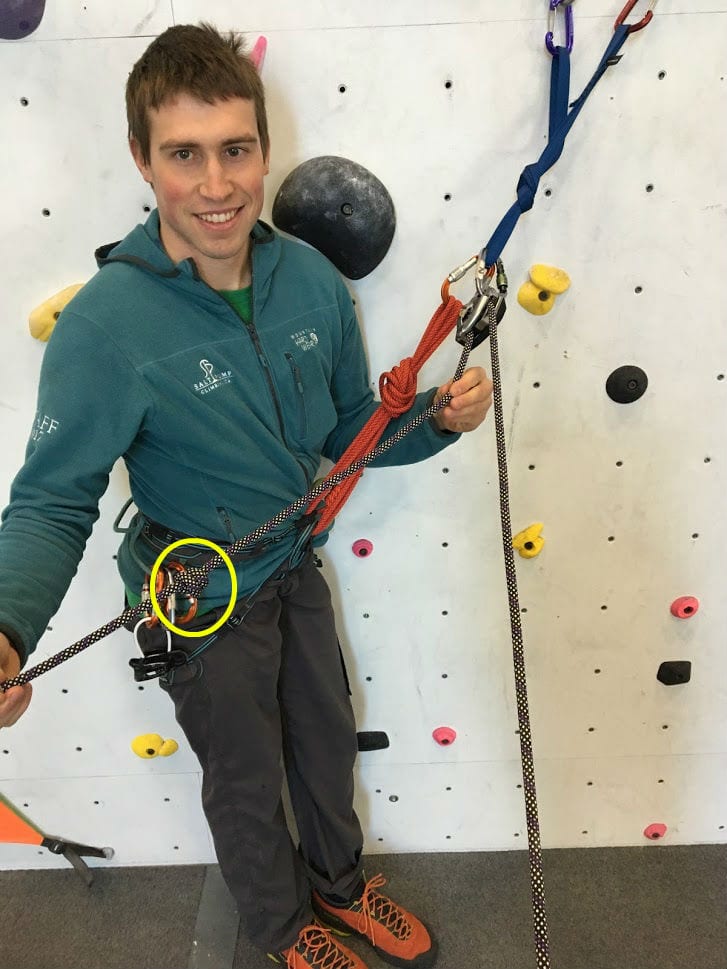System of the Down – Closing the Lowering System
Close the system
A common and preventable cause of climbing accidents is being lowered or rappelling off the end of a rope. As experience, studies, and anecdotes (#FreeSolo) attest, it’s not just new climbers having these accidents. The fix is a tight, well-dressed, double overhand knot with a 12 inch tail minimum. When extra security costs so little, why not take it!
Many brands and their respective belay devices work similarly. For simplicity, we will refer to devices from BD & Petzl. There are of course subtle differences, so make sure to read the manufacturer’s instructions.

Check & double check
Climbers are fallible. We will all make mistakes during our career. The type, timing, and aggregate is what leads to accidents. Experts are just as susceptible as beginners, for their intense familiarity often leads to complacency. Our #1 defense against these mistakes is double checking our systems, if possible, with our partner. The golden rule is to check and test a new system, before dismantling the old. Add security, before taking it away. Some questions to ask are: Is the system closed? Is there a back-up? Does the back-up work? Is there adequate friction? Carabiners locked? Is the rope and the belay device in the carabiner? Is the lowering method properly set up, and are you sure?!
Easy Insurance
Another way to increase security while you set-up and commit your climber to the lower, is to attach a figure-8 on a bight to your belay loop with a locking carabiner. This way, if mistakes are made, the total system failure will be avoided. The bight knot should be tied slightly below where you will have your autoblock. Once you have fully tested your new lowering system, you can untie the knot, lowering away.
Other methods…
There are other lowering methods, including variations to those described above. Some are unique and effective methods which improve efficiency, security, and help achieve specific goals. Others, of lesser quality, continue to propagate as any summer outing to Otter Cliffs will attest. Two commonly seen techniques should probably be replaced by one of the methods listed above.
First, using the eye hole (or its many variations) of guide style belay devices. This for many, myself included, was long the go to for lowering from above with an ATC Guide or Reverso. The problem is, the speed is too unpredictable, and frequently results in traumatized partners, and occasionally broken ankles. If you do use it, an autoblock backup is essential, and try to choose a variation which offers slightly more control.

Second, lowering (and belaying) directly off the harness without an anchor redirect. This technique was designed and remains appropriate for the rare situations where one does not fully trust the anchor as the stance becomes augmented into it. Suspect snow or sketchy alpine anchors are two examples. It is inappropriate for modern, 5th class rock climbing where anchor concerns mean much bigger problems. Unergonomic at best, unsafe at worst.


These techniques must be practiced and perfected before testing them out on your too trusting partners. Additionally, the first time using them, should not be 400 feet off the ground, at dusk, and hangry! Subtle nuances make or break all of these techniques. Continue to self-educate, and when in doubt or wishing for more, seek appropriate instruction. Learning the techniques is always the easy part. Knowing when and how to apply them is where the art lies.
